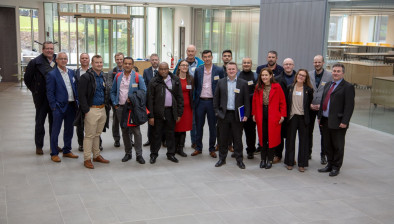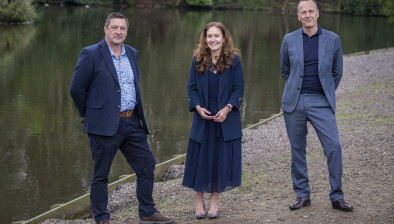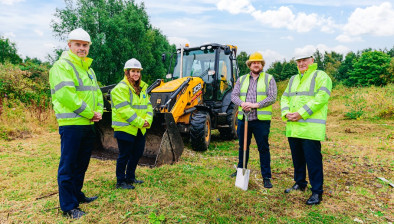Green light for Heriot Watt University’s £19m Discovery & Innovation Centre
 Architecture firm Sheppard Robson has received planning permission from the City of Edinburgh Council for a £19 million engineering, computer science and maths building at Heriot-Watt University.
Architecture firm Sheppard Robson has received planning permission from the City of Edinburgh Council for a £19 million engineering, computer science and maths building at Heriot-Watt University.
Located at the Riccarton Campus on the outskirts of West Edinburgh, the 5,200 m2 teaching and learning facility has been designed to promote collaboration between departments, with an emphasis on ‘Learning Through Making’ in subjects such as Engineering and Computer Science. The development also incorporates a Business Enterprise Zone, which acts as an incubator space for young businesses, forging links with the Heriot-Watt University Research Park.
Sheppard Robson said its design has been shaped to make the most of its green, parkland setting next to the loch at the centre of the campus. The building consists of two teaching blocks that are arranged either side of an atrium. The southern block curves to address the water whilst also enlarging the central atrium and the northern block is regular shape and sits directly behind this.
The materiality of the building is also derived from the building’s context. The northern, more orthogonal engineering block relates to the existing building on the campus with a robust brick base below light bronze aluminium cladding, with fins adding depth to the facades. The southern block has a lighter, more open feel, with prominently glazed elevations helping visually connect the building to the loch. This roofline rises towards the water’s edge, with an overhang and colonnade creating solar shading.
In between these two blocks to the west of the site is the main entrance, which leads into a double-height atrium that forms the heart of the project. A café and informal learning environments animate this central space, with high levels of visual permeability throughout the building creating views into many of the learning environments as well as through to the green landscape around the perimeter of the building.
The range of spaces within the building include a learning commons for collaborative working as well as flexible specialist spaces that can change over time to accommodate different styles of working or departments. Complimenting these spaces is a series of ‘Black Box’ spaces for high-tech simulations and testing.
James Dick, partner at Sheppard Robson, said: “The design has been carefully composed to encourage collaboration between students and staff, embrace new ways of learning that will have a direct impact on students’ ability to put theories into practice. The back drop to the exchange of ideas will be the campus’ green spaces, with the building making the most of this setting.”






















